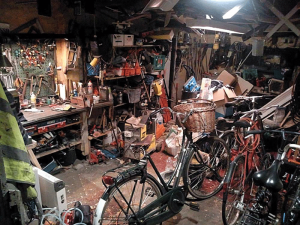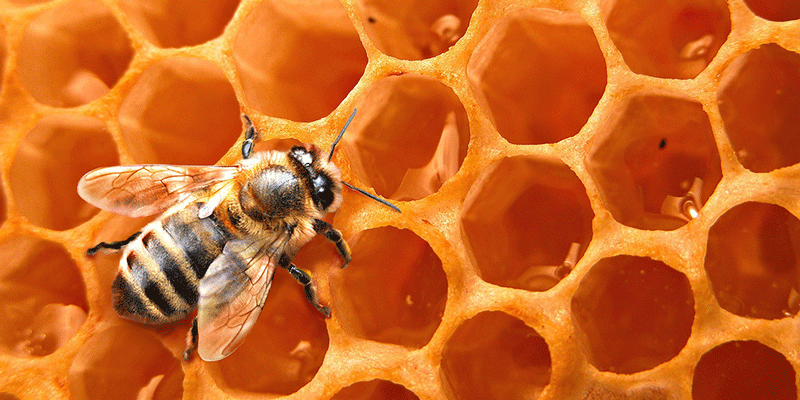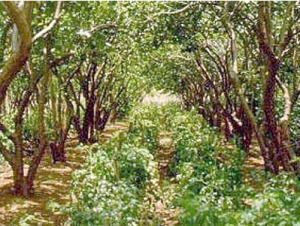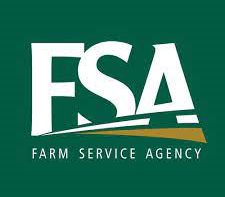By: Ann Harman
If the weather and the plants and the bees cooperate then you may have three or four opportunities to collect and sell varietal honeys at an excellent price. However, in order to keep these separate you have to extract each one separately. That could mean setting up extraction three or four separate times. The price for the varietals makes the bother worthwhile.
If you live in small hive beetle area it is essential to be vigilant or lose your crop. You will need to have everything – extractor, buckets, settling tank, uncapping equipment – ready to use the minute you pull the honey supers off. You cannot afford to have then sit around and wait for you to get prepared to extract. Besides, warm honey right off the hive extracts quicker than cooler honey that has sat around waiting for you. In some areas ants can be a problem. In shb areas you will need to clean up the extracting equipment and area very soon after extracting. Those shb can smell honey from a long distance away. It’s easier to clean up quickly than have to cope with the beetles.
You don’t have a honey house. (That’s in the planning and saving-money-for-it stage right now.) So far the extraction has been done in one side of the garage and bottling in the kitchen. The basement is out of the question – 10 sort of steep steps down (and up). However installing a dumbwaiter could make the basement an ideal extraction place. It does have hot and cold running water – a great convenience when handling sticky stuff.
Basements seem to come in two types: concrete floor, some shaky shelves full of whatever fits on them and assorted boxes and piles of junk. Or the basement was finished with a nice floor, has some furniture and a pile of boxes over in a corner. Either way, with a dumbwaiter, it could become a temporary honey house until the ‘real one’ gets built. Your clean up to use the area will be similar to that for a garage. A basement does have one advantage – it’s bee-proof.
For now the garage is the best place. One advantage to a garage is that you can use it for extracting after dark and leave the door open. No, you do not want to use a fan for air circulation because it stirs up dust. If you must extract during the day, the garage will have to be closed up. Are there some windows for ventilation? Are they screened? If not, screening is essential or you will accumulate thousands of bees. Screens have to be in good condition and fit tightly. When you consider planning a honey house, keep air circulation and comfortable working temperatures in mind.
Consider having a bee escape in that window leading outside. That way those errant bees brought inside have a way to get out and go home, rather than hang around and fall on your head when they get too close to the light bulb just above you.
 Your garage is not used for parking cars and trucks. Actually there’s no room for them. The extractor and other equipment take up space. The rest of the garage has the usual – mower, garden tools (if they were put back near the mower), some shelves with half-filled cans of paint, smoker and hive tools, a pile of hive bodies with and without frames of comb all in need of repair, an assortment of useful tools and a broken screwdriver.
Your garage is not used for parking cars and trucks. Actually there’s no room for them. The extractor and other equipment take up space. The rest of the garage has the usual – mower, garden tools (if they were put back near the mower), some shelves with half-filled cans of paint, smoker and hive tools, a pile of hive bodies with and without frames of comb all in need of repair, an assortment of useful tools and a broken screwdriver.
It can be an effort to set up extraction three or four times a season but the sales of varietals make it worth the effort. If one part of the garage can be easily set aside for extraction and left alone for the rest of the year it might not be necessary to clean up, rearrange and prepare an area for extraction so many separate times.
Shelves just on one side of the garage? Is there some way the garage can be considered to have two parts – one side as your ‘temporary honey house’ and the other side for mower, garden equipment, and even perhaps bicycles? The parts don’t have to be equal; they just have to be useful. Both areas then can have their own storage.
Actually the garage can be made into a more efficient space and much easier to clean and kept clean. Concrete garage floors are usually well decorated with grease spots from cars and mowers, paint splotches and some other unknown gunk. They can be cleaned and then given a coat of paint. The home improvement stores have lots of information on cleaners and cleaning and on suitable paints if you want to do it yourself. But there are companies who will be happy to do it for you. Yes you will have to move everything out for a few days but the garage needed a good cleanout anyway. You will end up with your extraction area much easier to clean up from sticky wax and honey even if you use lots of newspaper or a slippery sheet of plastic.
Before you start at the bottom (the floor), look up at the ceiling. You could be looking at beams supporting the roof, or wood rafters, or steel rafters or actually a ceiling. If it is a ceiling then clean that up of cobwebs and any other dust. If rafters, then you have a constant source of dust and other mystery debris. It might be wise to consider a ceiling or perhaps a temporary cover of plastic sheeting. Whatever you choose to do with that situation, a good vacuuming will be necessary. Keep the ceiling problem in mind when designing a real honey house.
Open shelves are another trap for dust. And, being open, tend to accumulate a remarkable assortment of useful, and not so useful, stuff. True, you can staple a sheet of plastic over them. However, the minute you or someone else needs a tool from a shelf, the plastic gets ripped. The problems with open shelves can be solved in a number of ways, some more costly than others.
Spend some time in a large home improvement store. Some of them have consultants for an assortment of projects and can show you solutions for garage and workshop storage. Tool chests on wheels come in a number of sizes. Perhaps such a chest would make it easier to do repairs on mowers and other garden equipment. Cupboards, usually sturdy plastic – with doors of course – are made for garage storage. Cans of paint, containers of motor oil and small gardening tools would have a good home in these.
There could be a cheaper way to have cupboards. Do you know someone who does kitchen remodeling? Find out what happens to the old cupboards that have been removed. Some may be in very good condition and would be suitable for your garage storage. If a few shelves are ruined from food storage, they can be replaced cheaply and easily.
If kitchen counters are being removed is there a length that can be salvaged? It could be made into a worktable or sit on top of some salvaged cupboards. All the cupboards don’t have to match. They can come from different kitchens. You are just interested in closed storage to save you cleanup time. In addition your extraction equipment will not be sharing a shelf with some dirty rags, a garden trowel and that broken screwdriver.
Some items are just not suitable for cupboard storage. How about the stack of hive bodies that is sitting around waiting for repair? Have you been shoving them here and there, lifting them to get them out of the way? It is very simple to build a dolly so they can be rolled anywhere you want quickly and easily. Hardware stores carry a large assortment of wheels, some with brakes. All you need to have a custom dolly is make either a wood frame or cut a piece of wood to size and buy four wheels of your choice. You may very well end up making more dollies – one to put your honey supers on to move them around, now in the garage but later in your honey house. Why lift and carry when a dolly makes life easier. Yes, hand trucks can help with some tasks but honey supers or a heavy bucket of honey on a dolly can be moved with just a shove.
A source of water is essential. It can be done with a couple of buckets and changing the water when it gets gunked up. A hose could be handy for final cleaning. Keep cleaning in mind when you plan your honey house. Of course it will have running water. The ‘on demand’ type of water heater is very economical for intermittent use. Perhaps it would be easy to have running water in the garage. If that were a possibility, it would almost make the garage into a ’honey house.’
Today beekeepers are using different types of hives. Some beekeepers have only Langstroth. Other beekeepers have both Langstroth and a few top bar hives and some have only top bar hives. But even the top bar hives have variations. Some beekeepers use frames; some use a combination – bars for the brood area and frames in the part for honey so an extractor can be used. No matter what types of hives are used, the area for obtaining honey from the combs and bottling must be a clean area. After all, honey is a food.
Those beekeepers who use frames, at least for the honey storage part of the hive, can be using an extractor. Those who are using no frames may wish to use a press. Some of the presses suitable for honeycomb are small and can sit on a table or counter. Others are larger and must sit on the floor. So those will need their floor space in the garage ‘honey house.’ Straining or settling can be a part of honey processing with presses, just like with extractors. Our three- and five-gallon plastic buckets can make excellent settling and bottling tanks for small quantities of honey.
Give a thought to your back. Problems with back pain are not reserved for ‘old people.’ When setting up your garage ‘honey house’ and planning your future honey house give some thought to making extracting and bottling easy. Awkward lifting, twisting and carrying heavy buckets or full honey supers can put a strain on backs. Since you will be extracting more than once this year, to obtain those precious varietals, think about ways to make the whole project – from hive in beeyard to labeled jar of honey – more efficient and easier on the back.
Now you seem to be ready for the first varietal crop of the season. Wait a minute! Have you made a dirt and dust barrier between your honey area of the garage and that for the mower and gardening tools? Hang a sheet of heavy-duty plastic to separate those two areas. Fasten or weight the bottom to keep the sheet from flapping and causing more dust. That barrier will need to be kept in place at least during the several honey harvests taking place this season. The plastic sheet will make it much easier and faster to do a quick clean up before starting on the next varietal.
Your garage ‘honey house’ has given you many ideas for your real honey house, one only used for honey. Your customers appreciate the three or four varieties your bees gather and you appreciate the income from the specialty honeys. This season you will also appreciate using your newly organized garage ‘honey house.’ (It’s about time you threw out that broken screwdriver.)
Ann Harman lives and keeps her bees and teaches beekeepers to make varietal honey from her home in Flint Hill, Virginia.







